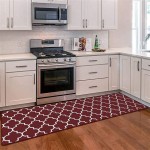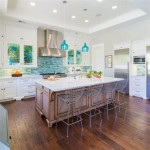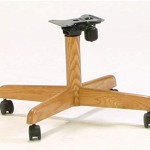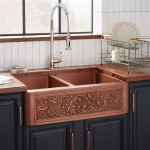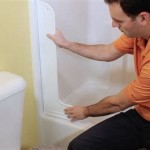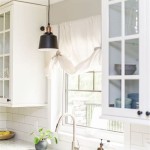Decorative Kitchen Plates for Wall Decoration Ideas
Decorative plates have long been used to enhance the aesthetic appeal of living spaces. Their versatility allows them to be incorporated into diverse design schemes, ranging from classic to contemporary. In the kitchen, decorative plates offer a unique opportunity to personalize the space and add a touch of character. This article explores various ideas for using decorative kitchen plates as wall decorations, outlining different styles, arrangements, and considerations for achieving a visually appealing and cohesive look.
Selecting Decorative Plates for Kitchen Walls
The selection of decorative plates is a crucial first step in creating an effective wall display. Several factors should be considered, including the style of the kitchen, the existing color palette, and the desired overall aesthetic. Plates are available in a wide range of materials, including ceramic, porcelain, glass, and metal, each offering a distinct texture and visual appeal.
Consider the kitchen's architectural style. In a farmhouse kitchen, plates with floral patterns, pastoral scenes, or vintage designs might be particularly suitable. A modern kitchen, on the other hand, could benefit from plates with geometric patterns, abstract art, or bold, contrasting colors. The aim is to choose plates that complement the existing décor and enhance the overall design scheme.
The color palette of the kitchen is another important factor to consider. Plates can be used to introduce new colors into the space or to reinforce existing color schemes. For example, in a kitchen with neutral tones, plates with vibrant colors can add a pop of visual interest. Conversely, in a kitchen with bold colors, plates with more subdued tones can create a sense of balance. Consider using a color wheel to identify complementary or analogous colors that will work well together.
The size and shape of the plates are also important considerations. A mix of different sizes and shapes can create a dynamic and visually interesting display. However, it is important to ensure that the plates are proportionate to the size of the wall space. Small plates can get lost on a large wall, while large plates can overwhelm a small wall. Consider creating a mock-up of the display on the floor before hanging the plates to ensure that they are arranged in a pleasing manner.
Finally, consider the theme of the plates. Plates can be grouped thematically, such as by color, pattern, or subject matter. This can create a sense of cohesion and visual harmony. For example, a collection of blue and white plates can create a classic and elegant look, while a collection of plates with botanical illustrations can create a natural and organic feel.
Arranging Decorative Plates on Kitchen Walls
Once the decorative plates have been selected, the next step is to arrange them on the kitchen walls. There are several different arrangement styles to choose from, each offering a unique aesthetic. The choice of arrangement style will depend on the size and shape of the wall space, the number of plates being used, and the desired overall effect.
Symmetrical arrangements are a classic and formal option. In a symmetrical arrangement, the plates are arranged in a balanced and mirrored pattern. This can create a sense of order and stability. Symmetrical arrangements are particularly well-suited for formal kitchens or kitchens with a traditional design style. To achieve a symmetrical arrangement, start by identifying the center point of the wall. Then, arrange the plates in a balanced pattern around this center point. Use a level to ensure that the plates are hung evenly.
Asymmetrical arrangements are a more modern and informal option. In an asymmetrical arrangement, the plates are arranged in a less structured and more organic pattern. This can create a sense of movement and visual interest. Asymmetrical arrangements are particularly well-suited for modern kitchens or kitchens with a contemporary design style. To achieve an asymmetrical arrangement, start by placing the largest plate on the wall. Then, arrange the other plates around it in a visually pleasing pattern. Experiment with different arrangements until you find one that you like. Don't be afraid to overlap the plates slightly to create a more layered and dynamic effect.
Grid arrangements are a simple and modern option. In a grid arrangement, the plates are arranged in a uniform grid pattern. This can create a sense of order and clarity. Grid arrangements are particularly well-suited for minimalist kitchens or kitchens with a Scandinavian design style. To achieve a grid arrangement, use a level and a measuring tape to create a precise grid pattern on the wall. Then, hang the plates within the grid, ensuring that they are evenly spaced. Consider using plates of the same size and shape to create a more uniform and cohesive look.
Gallery wall arrangements are a more eclectic and personalized option. In a gallery wall arrangement, the plates are arranged in a mixed and varied pattern, along with other decorative items such as framed artwork, mirrors, and photographs. This can create a sense of personality and visual richness. Gallery wall arrangements are particularly well-suited for kitchens with a bohemian or eclectic design style. To achieve a gallery wall arrangement, start by gathering a collection of plates and other decorative items that you like. Then, arrange them on the floor until you find a pattern that you like. Don't be afraid to mix and match different styles and sizes. Use a variety of hanging methods to create a more layered and dimensional effect.
Considerations for Hanging Decorative Plates
Properly hanging decorative plates is essential for ensuring that they are displayed safely and securely. Several factors should be considered, including the weight of the plates, the type of wall surface, and the desired hanging method. Incorrect hanging methods can result in damaged plates, damaged walls, or even personal injury.
The weight of the plates is a primary consideration. Heavier plates require more robust hanging methods. For lightweight plates, adhesive plate hangers may be sufficient. These hangers typically consist of a strong adhesive pad that attaches to the back of the plate. However, adhesive hangers are not suitable for heavier plates, as they may not provide sufficient support. For heavier plates, consider using wire plate hangers or plate hanging hardware. Wire plate hangers are designed to cradle the plate and distribute its weight evenly. Plate hanging hardware typically consists of a metal hook that is attached to the wall and a wire or chain that is attached to the plate. This method provides a more secure and reliable way to hang heavier plates.
The type of wall surface is another important consideration. Different wall surfaces require different hanging methods. For drywall, use drywall anchors to provide additional support. Drywall anchors are designed to grip the drywall and prevent the screws from pulling out. For plaster walls, use plaster screws or plaster anchors. Plaster screws are designed to penetrate the plaster without cracking it. Plaster anchors provide a more secure hold in plaster walls. For brick or concrete walls, use masonry screws or masonry anchors. Masonry screws are designed to penetrate the brick or concrete without damaging it. Masonry anchors provide a more secure hold in brick or concrete walls.
The desired hanging method will also influence the choice of hardware. Plate hangers are a popular option for displaying decorative plates. They are easy to install and provide a secure way to hang plates of various sizes and weights. However, plate hangers may not be suitable for all types of plates. For plates with irregular shapes or delicate finishes, consider using a different hanging method. Invisible plate hangers are a more discreet option. These hangers attach to the back of the plate and are not visible from the front. This creates a clean and seamless look. However, invisible plate hangers may not be suitable for heavier plates, as they may not provide sufficient support.
Before hanging any plates, it is important to mark the desired locations on the wall. Use a pencil and a level to ensure that the plates are hung evenly. Consider creating a template of the plate arrangement on paper. This will help you to visualize the final result and ensure that the plates are properly spaced. After marking the locations, use a drill to create pilot holes for the screws or anchors. This will make it easier to install the hardware and prevent the wall from cracking. Finally, carefully hang the plates, ensuring that they are securely attached to the wall. Double-check that the plates are level before removing your hands.
Regularly inspect hanging hardware for wear and tear. Over time, the adhesive on plate hangers can weaken, and wire plate hangers can become bent or damaged. Replace any damaged hardware immediately to prevent the plates from falling.

13 Wall Plate Decor Ideas We Re Stealing From Instagram

32 Decorative Plate Ideas Creative Ways To Style Your Walls

The Ultimate Guide To Decorating With Plates On Wall Laurel Home

30 Eye Catchy Kitchen Wall Décor Ideas Digsdigs

Unique Plate Wall Decor Vintage Style Display Ideas

How To Style A Plate Wall Like Designer

32 Decorative Plate Ideas Creative Ways To Style Your Walls

The Ultimate Guide To Decorating With Plates On Wall Laurel Home

Your Guide To Decorating With Plates Ang Decorates An Interior Design Blog

30 Eye Catchy Kitchen Wall Décor Ideas Digsdigs
Related Posts

